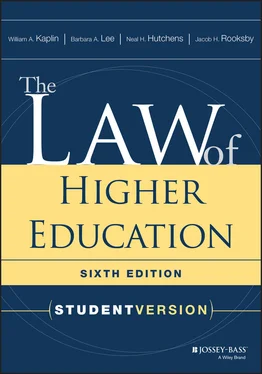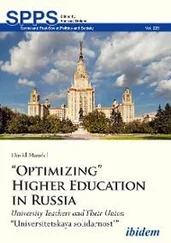2.2.3 Managing litigation and the threat of litigation.Managing, settling, and conducting litigation, like planning to avoid it, requires at all stages the in-depth involvement of attorneys. 3 Institutions should place heavy emphasis on this aspect of institutional operations. Both administrators and counsel should cultivate conditions in which they can work together as a team in a treatment law mode (see Section 2.1.7). The administrator's basic understanding of the tactical and technical matters concerning jurisdiction, procedure, evidence, and remedies, and counsel's mastery of these technicalities and the tactical options and difficulties they present, will greatly enhance the institution's capacity to engage in treatment law that successfully protects the institution's mission as well as its reputation and financial resources. Counsel's understanding of judicial deference (see Section 2.2.5 above) and its tactical role in litigation is also of critical importance.
Litigation management is a two-way street. It may be employed either in a defensive posture, when the institution or its employees are sued or threatened with suit, or in an offensive posture, when the institution seeks access to the courts as the best means of protecting its interests with respect to a particular dispute. Administrators, like counsel, will thus do well to consider treatment law from both perspectives and to view courts and litigation as offering, in some circumstances, a potential benefit, rather than only as presenting a hindrance.
Although administrators and counsel must accord great attention and energy to lawsuits when they arise and thus must emphasize the expert practice of treatment law, their primary and broader objective should be to avoid lawsuits or limit their scope whenever that can be accomplished consistently with the institutional mission. Once a lawsuit has been filed, administrators and counsel sometimes can achieve this objective by using summary judgment motions or (if the institution is a defendant) motions to dismiss, or by encouraging pretrial negotiation and settlement. Moreover, by agreement of the parties, the dispute may be diverted from the courts to a mediator or an arbitrator. Even better, administrators and counsel may be able to derail disputes from the litigation track before any suit is filed by providing for a suitable alternative mechanism for resolving the dispute. Mediation and arbitration are common and increasingly important examples of such alternative dispute resolution (ADR) mechanisms (see Section 2.3below), which are usable whether the institution is a defendant or a plaintiff and whether the dispute is an internal campus dispute or an external dispute with a commercial vendor, construction contractor, or other outside entity. For internal campus disputes, internal grievance processes and hearing panels (see, for example, Section 10.1) are also important ADR mechanisms and may frequently constitute remedies that, under the “exhaustion of remedies” doctrine (see Section 2.2.2.4 above), disputants must utilize before resorting to court.
Even before disputes arise, administrators and counsel should be actively engaging in preventive law ( Section 2.4.2) as the most comprehensive and forward-looking means of avoiding and limiting lawsuits. Preventive law also has a useful role to play in the wake of a lawsuit, especially a major one in which the institution is sued and loses. In such a circumstance, administrators may engage in a “post-litigation audit” of the institutional offices and functions involved in the lawsuit—using the audit as a lens through which to view institutional shortcomings of the type that led to the judgment against the institution and to rectify such shortcomings in a way that serves to avoid future lawsuits in that area of concern.
Section 2.3. Alternative Dispute Resolution
2.3.1 Overview.The substantial cost of litigation, in terms of both time and money, and the law's limited capacity to fully resolve some types of disputes, have encouraged businesses, other organizations, and even courts to turn to alternative dispute resolution (ADR). ADR encompasses a variety of approaches to resolving disputes, from informal consultation with an ombudsperson who is vested with the authority to resolve some disputes and to seek resolution of others, to more formal processes such as grievance procedures, mediation, or arbitration. Commercial disputes and disputes in the financial services industry have been resolved through arbitration for decades. Academe has been slow to accept ADR, but it is becoming more common for certain kinds of disputes, and more institutions are turning to ADR in an attempt to reduce litigation costs and to resolve disputes, if possible, in a less adversarial manner.
Many employers embrace ADR because of its promise of quicker, less-expensive resolution of disputes, and this promise is often realized. Some for-profit colleges have also begun to include arbitration clauses in their enrollment agreements with students for the same reasons. Discovery is not used in mediation and is limited in arbitration as well. Arbitrators typically do not use judicial rules of evidence, may admit evidence that a court would not (such as hearsay evidence), and generally issue a ruling (called an “award”) a month or two after the hearing, unless they issue an oral award on the spot. The parties select the mediator or arbitrator jointly, rather than being assigned a judge, which may give them more confidence in the process. Indeed, the parties design the process in order to meet their needs and can change the process if it needs improvement.
ADR has some disadvantages, however. ADR is a private process, and there is typically no public record made of the outcome. This characteristic of ADR tends to benefit the college or university, which would prefer to avoid public inquiry into personnel or student academic performance decisions, and may make it difficult for an employee or student who must help to select a mediator or arbitrator to evaluate that individual's record or previous rulings. The lack of public accountability is viewed as problematic because many of these claims have a statutory basis, yet they are resolved without judicial or regulatory agency scrutiny. As discussed below, the decisions of arbitrators are difficult to appeal and are usually considered final. Furthermore, there may be a substantial difference in skill and knowledge between the employee or student who is challenging an institution's decision and the individual who is representing the institution before the mediator or arbitrator. Many ADR systems prohibit attorneys for either party, and even if attorneys are permitted, the employee or student may not be able to afford to retain one.
2.3.2 Types of ADR.ADR may use internal processes, external third parties, or both. Internal processes include grievance procedures, in which a student or employee may challenge a decision by invoking a right, usually created by the employee's contract, state law, or a student code of conduct, to have the decision reviewed by an individual or small group who were not involved in the challenged decision. Mediation and arbitration involve a third-party neutral, who may be a noninvolved student or employee, or a professional trained in dispute resolution. Some ADR processes use all of these mechanisms to resolve disputes.
Grievance procedures, particularly those included in collective bargaining agreements, may have multiple steps, and may culminate either in a final decision by a high-level administrator or a neutral individual who is not an employee of the institution. Depending upon the language of any contracts with employees or relevant state law, the fact finding of a grievance panel may be viewed by a reviewing court as binding on the institution and the grievant. For example, in Murphy v. Duquesne University of the Holy Ghost , 777 A.2d 418 (Pa. 2001), a tenure revocation case discussed in Section 5.7.3 of this book, the court ruled that a faculty panel's fact finding was binding on the plaintiff, who could not relitigate the issue of whether the institution had demonstrated that his misconduct satisfied the contractual grounds for termination. However, if a faculty grievance panel recommends a resolution to a dispute that involves compromise or other ADR mechanisms, a court may not allow the plaintiff to argue that this finding has preclusive effectin a breach of contract claim, as in Breiner-Sanders v. Georgetown University , 118 F. Supp. 2d 1 (D.D.C. 1999). In that case, the court ruled that the grievance panel had not applied contract law principles in its hearing of a faculty member's grievance and thus the panel's decision, which was favorable to the faculty member, did not have preclusive effect and did not support a motion for summary judgment on behalf of the faculty member.
Читать дальше












